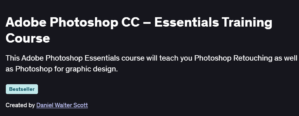Introduction to SOLIDWORKS Course
An efficient, hands-on SOLIDWORKS course that jumpstarts your CAD skills in under three hours.
What will you learn in Introduction to SOLIDWORKS Course
Master the SOLIDWORKS interface to efficiently navigate toolbars and commands
Sketch 2D geometry and convert designs into 3D parts using extrude, revolve, and cut features
Apply dimensioning and annotation standards to produce professional engineering drawings
Assemble multi-component models using mates, constraints, and advanced assembly techniques
Manage part libraries and reuse components to streamline design workflows
Program Overview
Module 1: Getting Started with SOLIDWORKS
⏳ 5 minutes
Topics: Software installation, licensing setup, interface orientation
Hands-on: Install SOLIDWORKS and explore the main workspace
Module 2: Navigating the User Interface
⏳ 30 minutes
Topics: Command Manager, Feature Manager Design Tree, toolbar customization
Hands-on: Personalize your workspace and locate sketch and feature tools
Module 3: Sketching and Part Modeling
⏳ 45 minutes
Topics: 2D sketch entities, relations, dimensions; extrude, revolve, cut features
Hands-on: Create parametric sketches and turn them into 3D parts
Module 4: Engineering Drawings
⏳ 30 minutes
Topics: Drawing sheet formats, multi-view projections, annotations, tolerancing standards
Hands-on: Generate technical drawings from parts and apply dimensioning standards
Module 5: Assemblies & Advanced Tools
⏳ 40 minutes
Topics: Mates, subassemblies, interference detection, design tables
Hands-on: Build a basic assembly, troubleshoot mate errors, and explore design tables
Get certificate
Job Outlook
CAD designers are in high demand across manufacturing, automotive, and aerospace sectors
Mechanical engineers using SOLIDWORKS earn an average of $102K–$110K annually
Expertise in SOLIDWORKS opens doors to roles in product development, prototyping, and R&D
Freelance CAD services are growing for custom design and rapid prototyping projects
- Clear, focused lessons for rapid skill acquisition
- Practical exercises reinforce each feature as you learn
- Taught by a certified SOLIDWORKS professional
- Course length (2 h 40 m) limits coverage of advanced tools
- Lacks interactive quizzes to test understanding
Specification: Introduction to SOLIDWORKS Course
|
FAQs
- The course teaches basic part modeling, sketches, and assemblies.
- Advanced simulations (FEA, CFD, motion) are not included.
- Learning simulation requires additional SOLIDWORKS Simulation modules.
- You’ll gain foundational skills that make advanced tools easier to learn.
- Supplementing with simulation-specific tutorials is recommended for engineers.
- Course covers parametric sketches and part features.
- Practical manufacturing applications are briefly mentioned but not in depth.
- Advanced design for manufacturing practices require extra learning.
- The course teaches proper dimensioning and constraints.
- You can later apply these skills to CNC, 3D printing, or sheet metal projects.
- No previous CAD knowledge is needed.
- The course is designed for complete beginners.
- Hands-on exercises guide you step-by-step in creating parts and assemblies.
- Familiarity with basic computer operations helps.
- Learning is accelerated by following along with exercises actively.
- Basic assembly creation and mates are covered.
- Complex assemblies with multiple interdependencies require more practice.
- Advanced assembly management tools are not deeply covered.
- The course provides a foundation to gradually build complex models.
- Real-world projects require additional practice and learning.
- It provides a strong foundation in SOLIDWORKS, valued by mechanical engineers.
- Entry-level CAD roles can benefit from these skills.
- Advanced roles will require further study in simulation, assemblies, and design for manufacturing.
- Portfolio building with projects boosts employability.
- Freelance CAD and prototyping opportunities are accessible with these core skills.





